Photos show how the NCAA men's basketball tournament has changed throughout the years
Gabi Stevenson

- March Madness 2023 is well underway with the final four teams competing for the title this weekend.
- Officially referred to as the NCAA men's basketball tournament, the annual event started in 1939.
In 1939, the NCAA held its first Division I men's basketball tournament.
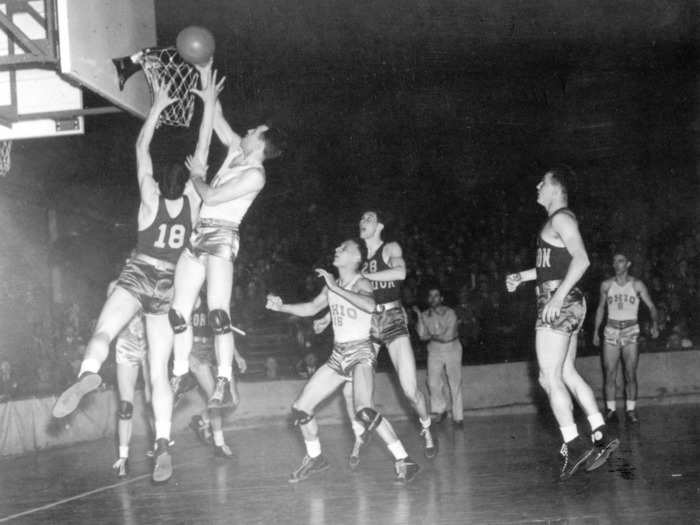
According to the NCAA, the tournament consisted of eight teams, including the Oregon Webfoots (now the Ducks) and the Ohio State Buckeyes. The two teams faced off in the championship game on March 27, 1939, in Patten Gymnasium in Evanston, Illinois.
Although Oregon ultimately won the game 46-33 and claimed the school's only national title, Ohio State still made history. The team's coach, Harold Olsen, was instrumental in creating the postseason playoffs and led the Buckeyes to the tournament four times during his 23-year tenure, per the Naismith Memorial Basketball Hall of Fame.
The tournament's pool of contests expanded between the 1950s and the 1970s.
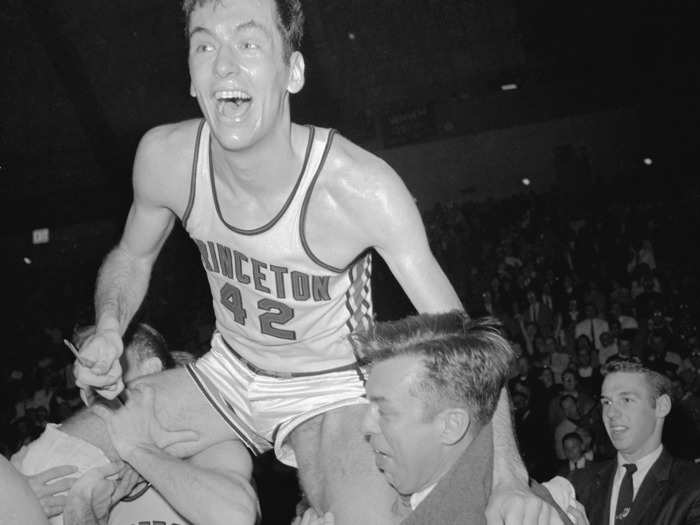
The number of teams in the tournament expanded from eight to 16 in 1951, according to the NCAA, but the tournament still had a slow start.
According to Encyclopedia Britannica, the contest was looked over by many teams in favor of the National Invitation Tournament, or NIT, which began in 1938. Per Britannica, the NIT "was considered more prestigious and usually featured the best teams in the country."
The UCLA Bruins created a championship dynasty in the tournament, boosting its popularity with elite teams in the 1960s and 1970s.
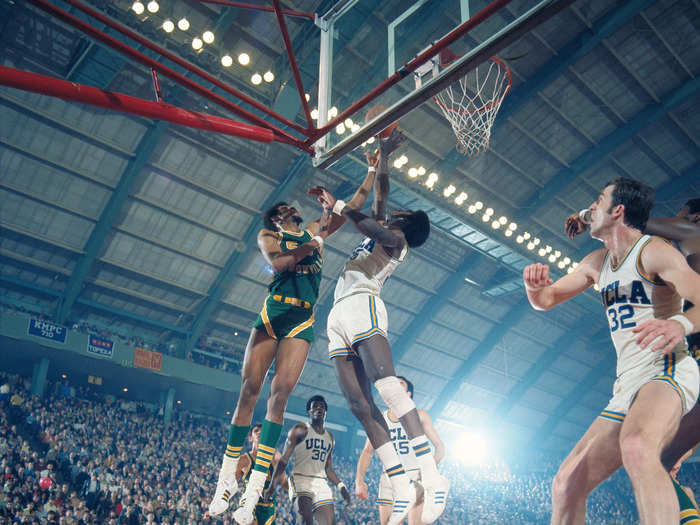
The NCAA tournament's popularity began to rise with the help of powerhouse teams like the UCLA Bruins, who won seven consecutive titles from 1967 to 1973.
Led by legendary coach John Wooden, the team also won in 1964, 1965, and 1975, giving the school 10 wins in a 12-year span.
In 1975 the NCAA again doubled the number of contestants to 32, establishing the tournament as the "premier college basketball postseason championship series in the United States," per Britannica. It wouldn't expand again until 1985 when it enlarged the field to 64 teams.
The nickname "March Madness" wasn't associated with the tournament until the early 1980s, but the moniker has a long history.
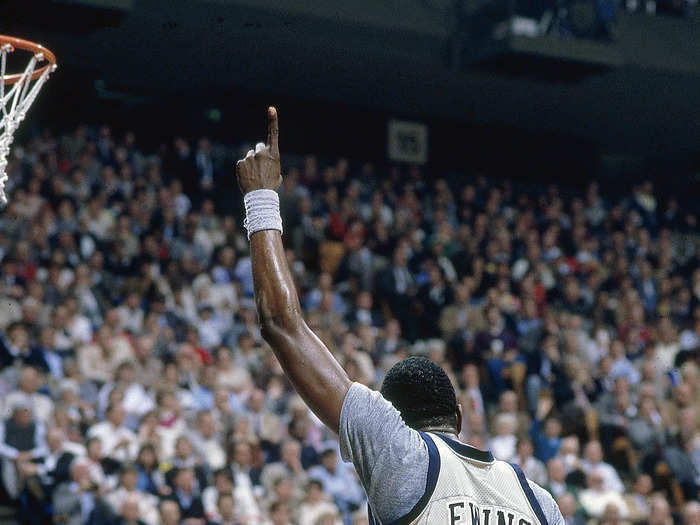
In 1982 former NBA superstar Patrick Ewing was a freshman playing with the Georgetown Hoyas when the term was first used in reference to the tournament.
According to The Chicago Tribune, CBS broadcaster Brent Musberger called the event "March Madness" during live coverage that year. The nickname was actually coined by Illinois High School Association official Henry V. Porter in 1939 when he wrote an article for the IHSA magazine titled "March Madness."
The name took off as the title for the state's high school basketball tournament in the 1940s, and by 1977, the IHSA began licensing the phrase to brands like Wilson Sporting Goods and PepsiCo.
After the term became closely associated with the NCAA tournament, the IHSA sued NCAA sponsor GTE to stop it from distributing a video game using the "March Madness" name in 1996.
The IHSA and the NCAA created a joint organization later that year, giving the March Madness Athletic Association the trademark rights to the phrase, the outlet reports.
The 1996 Final Four was the last Final Four to be held in a basketball-specific arena.
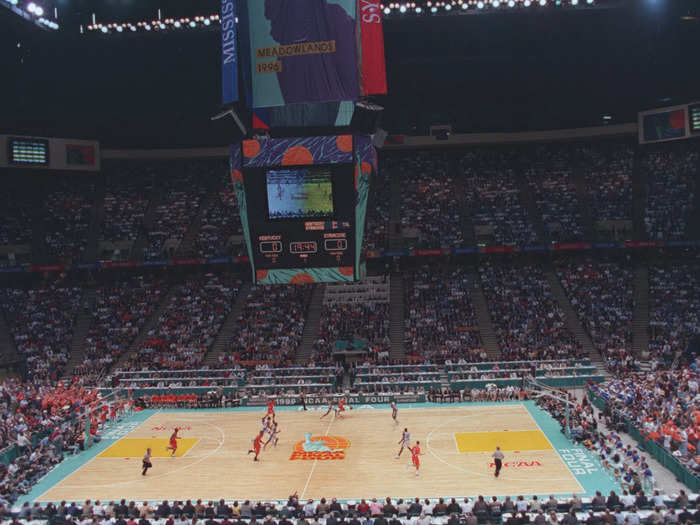
According to SB Nation, the men's Final Four has been played in domed football stadiums every year since 1996.
The outlet also reported that the Final Four hasn't been played on the West Coast since 1995 — after the Kingdome in Seattle was demolished in 2000, there weren't any domed stadiums in the region.
It wasn't until 2006 when Cardinals Stadium was built in Glendale, Arizona, that a dome west of Texas became available. Now named State Farm Stadium, the venue hosted the Final Four in 2017 and will host again in 2024, per the NCAA.
Throughout the 2000s, the tournament was packed with players who would go on to become NBA greats.
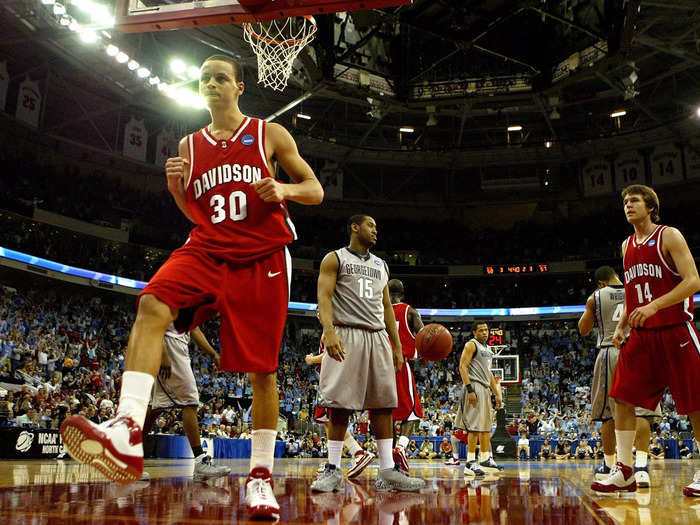
Big names like Steph Curry, Kevin Durant, Dwyane Wade, and Chris Paul competed in the NCAA tournament during their college tenures in the 2000s.
In 2008, Curry led the 10-seed Davidson Wildcats — a team that hadn't won a tournament game since 1969 — to the Elite Eight. Although the Wildcats lost to the Kansas Jayhawks by just two points, Curry was still named the NCAA Tournament Midwest Regional Most Outstanding Player, according to NBA.com.
Wade also carried the Marquette Golden Eagles on a historic run to the Final Four in 2003, the team's first Final Four appearance since 1977. He was the fifth overall pick in the 2003 NBA draft, making him the highest-drafted athlete from Marquette of all time, according to the university's website.
The first few years of the 2020s brought major changes to the game.
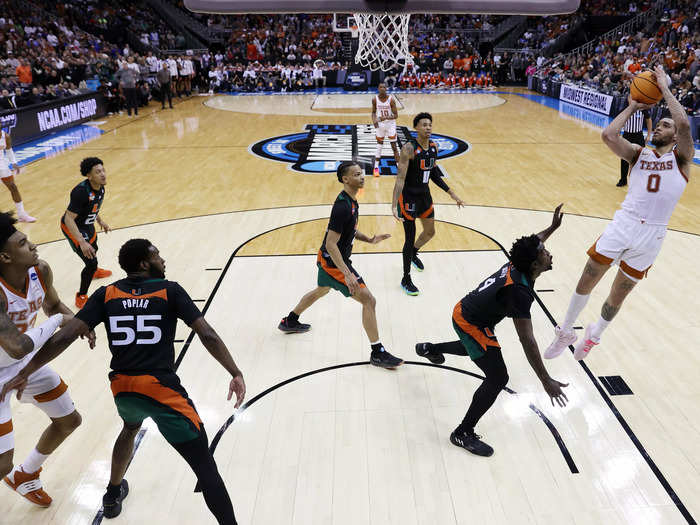
The tournament was canceled in March 2020 due to the growing threat of COVID-19, marking the first time the tournament wasn't held since its inception, according to CBS Sports.
In 2021, the NCAA announced it would hold the entirety of the event in Indiana. Although the tournament was originally scheduled to take place in 13 different sites across the US, it was moved to Indiana to reduce travel and improve safety.
The men's basketball tournament began sharing the "March Madness" branding with the women's tournament in 2022. According to USA Today, the recommendation came from a law firm hired by the NCAA to investigate gender disparities in championship events.
The 2023 tournament has also been full of historic moments. All four one-seed teams were eliminated before the Elite Eight for the first time, allowing the Miami Hurricanes, the Florida Atlantic Owls, and the San Diego State Aztecs to make their first-ever Final Four appearances.
The Final Four kicks off between Florida Atlantic and San Diego State on April 1.
Popular Right Now
Popular Keywords
Advertisement